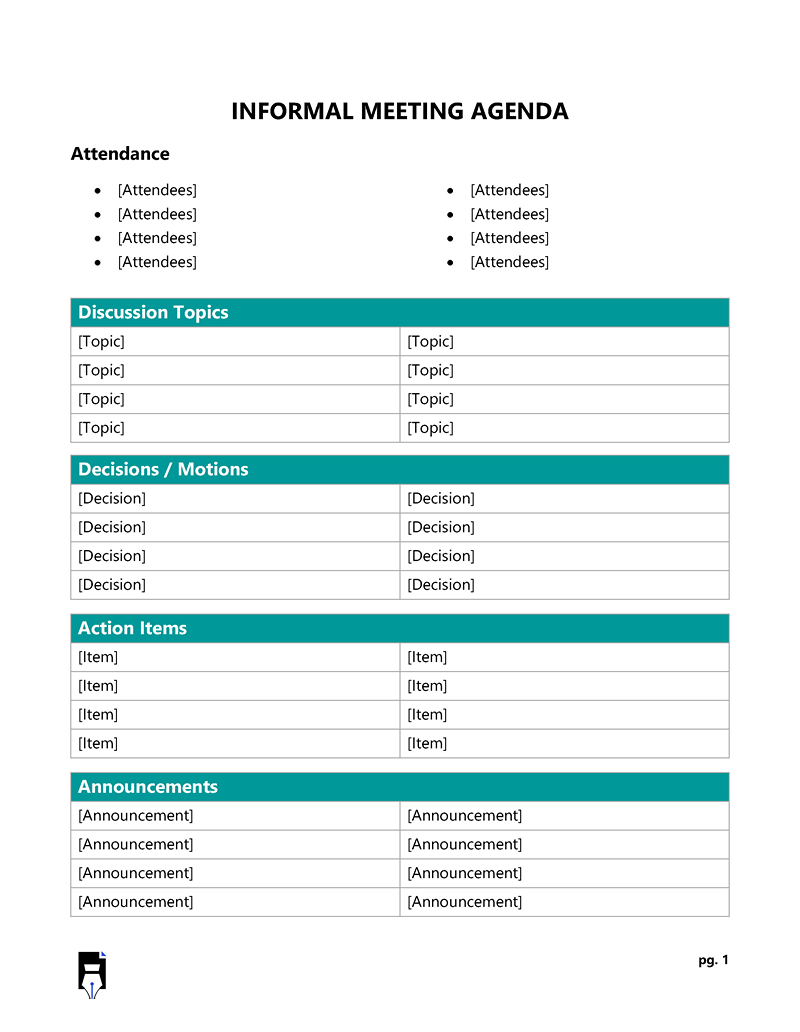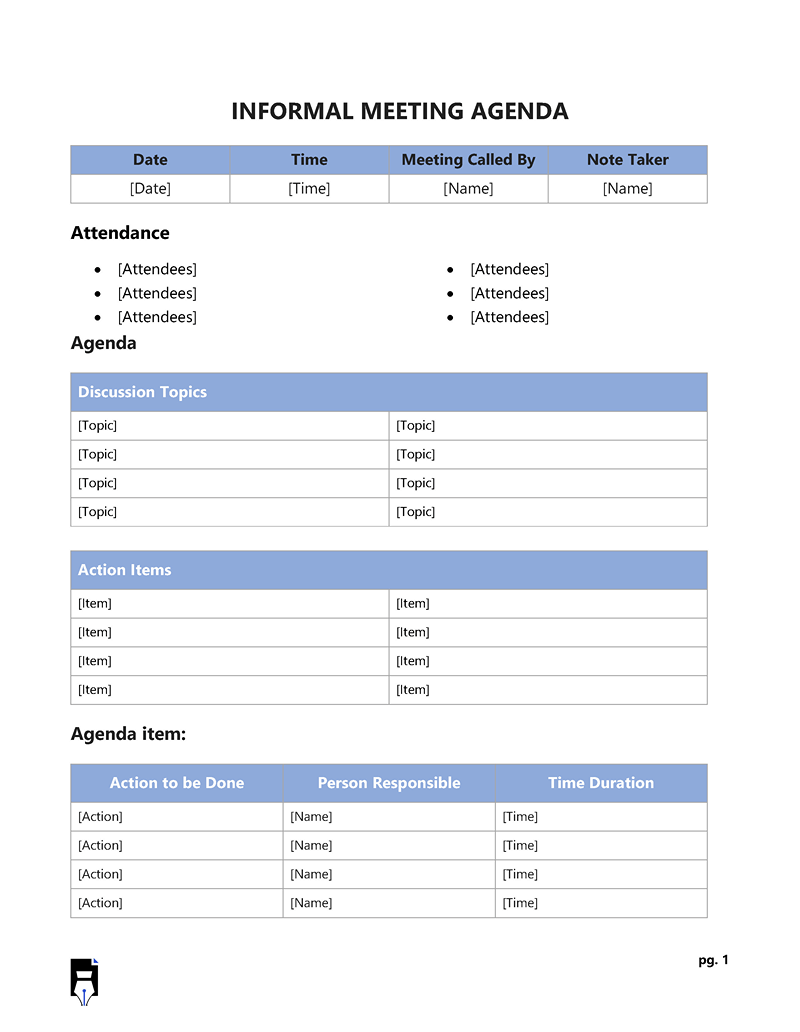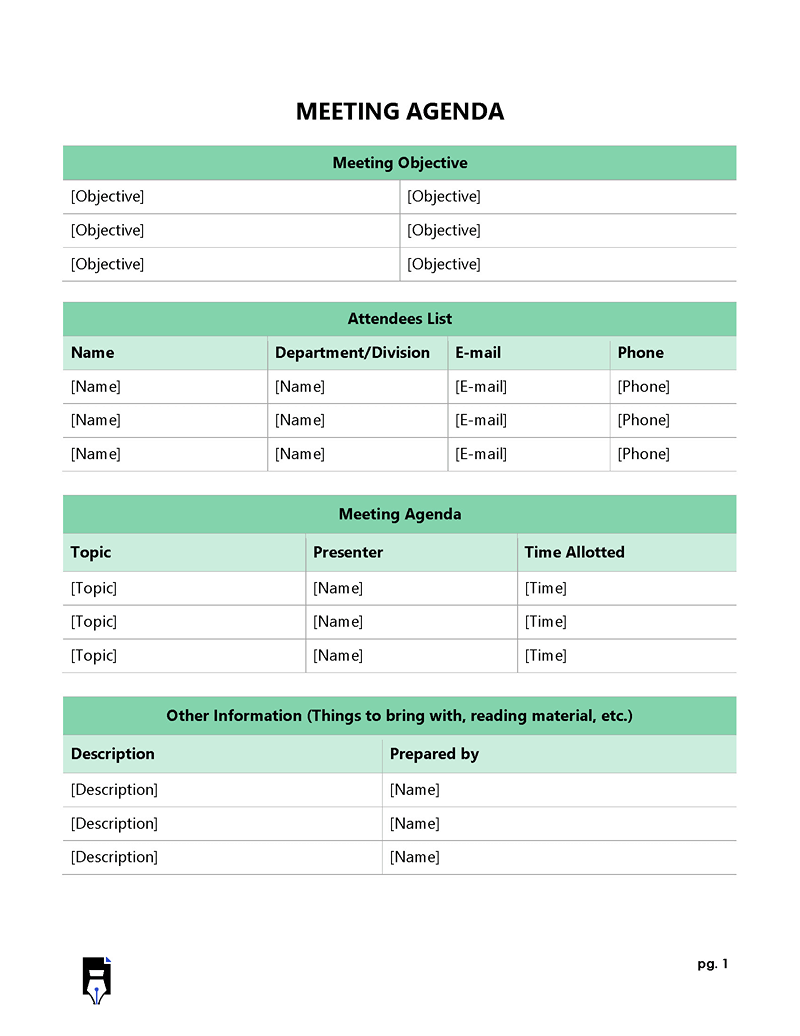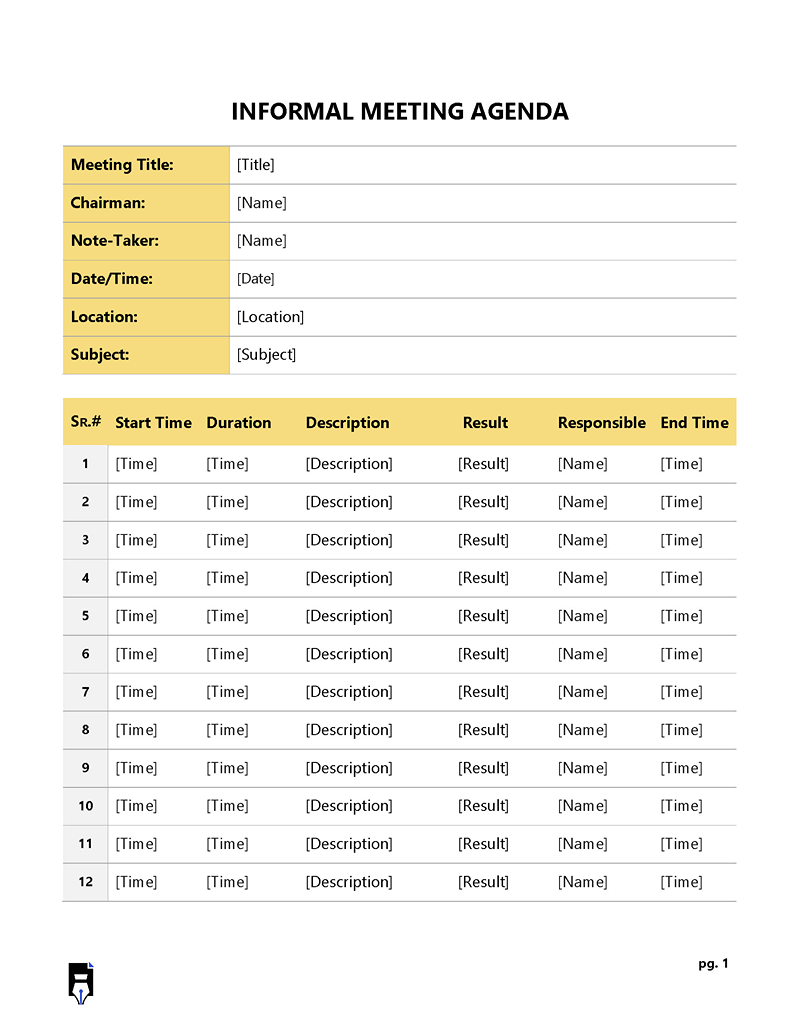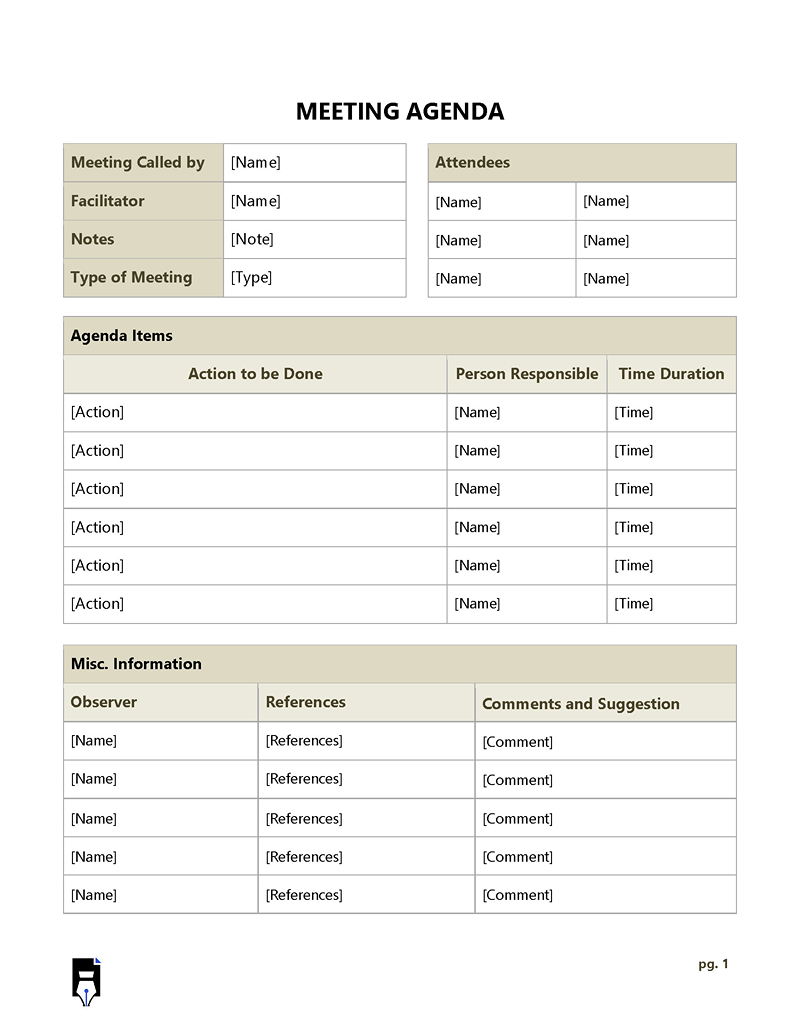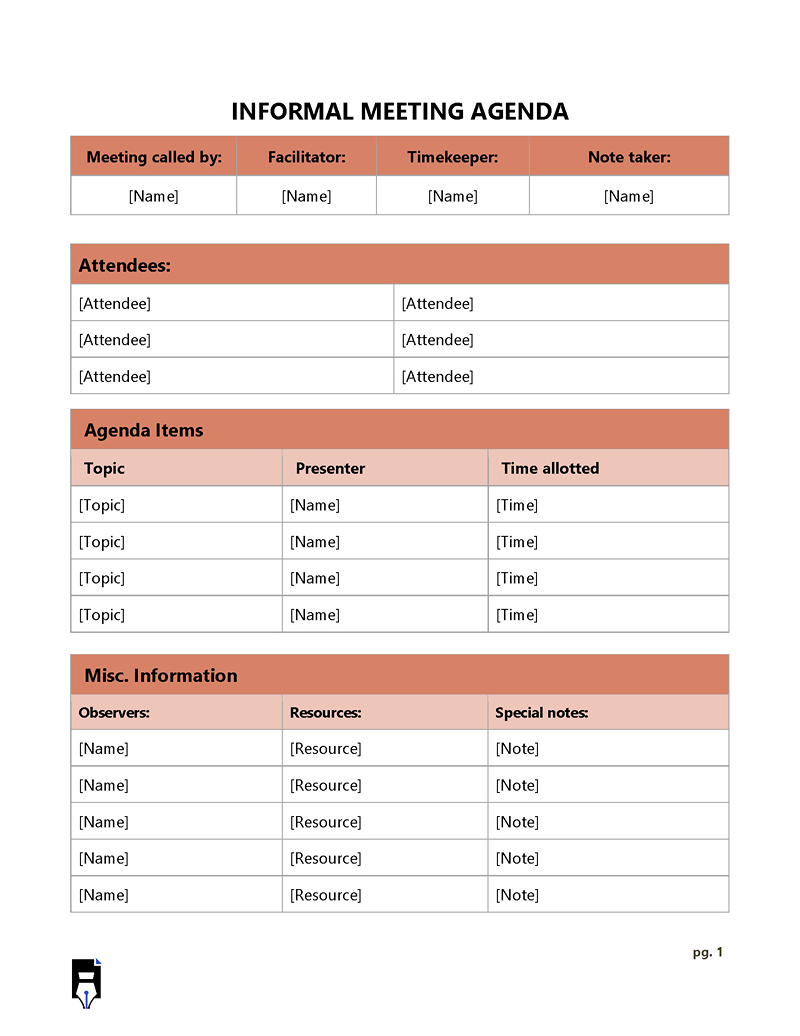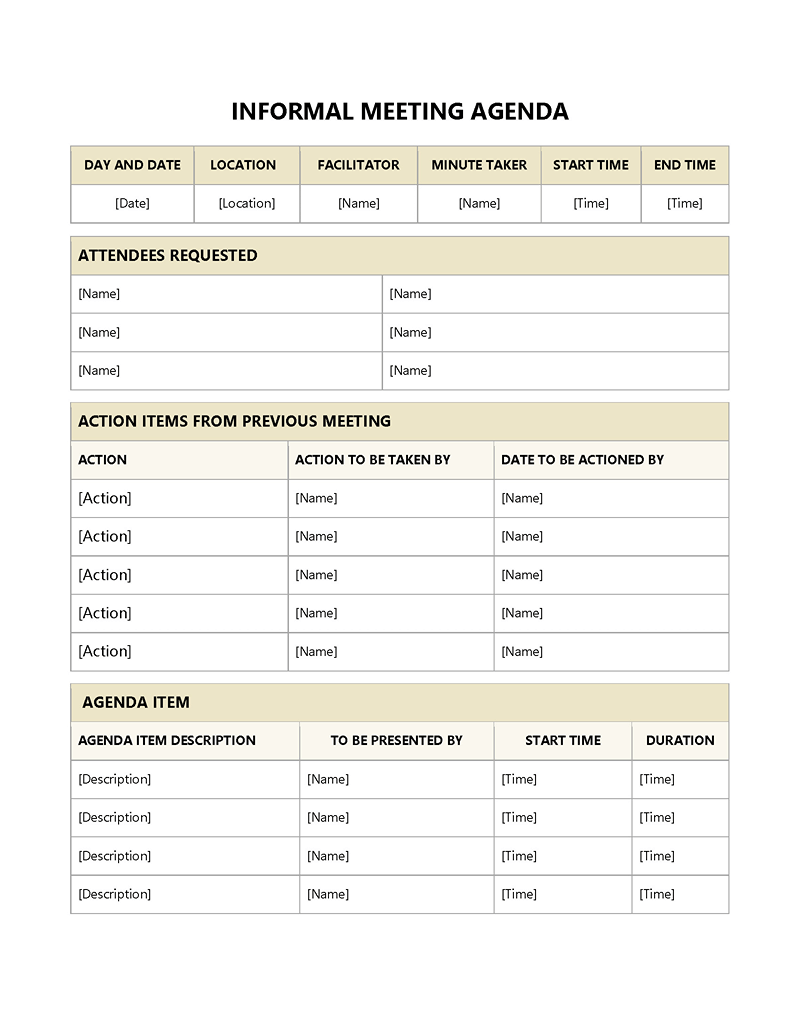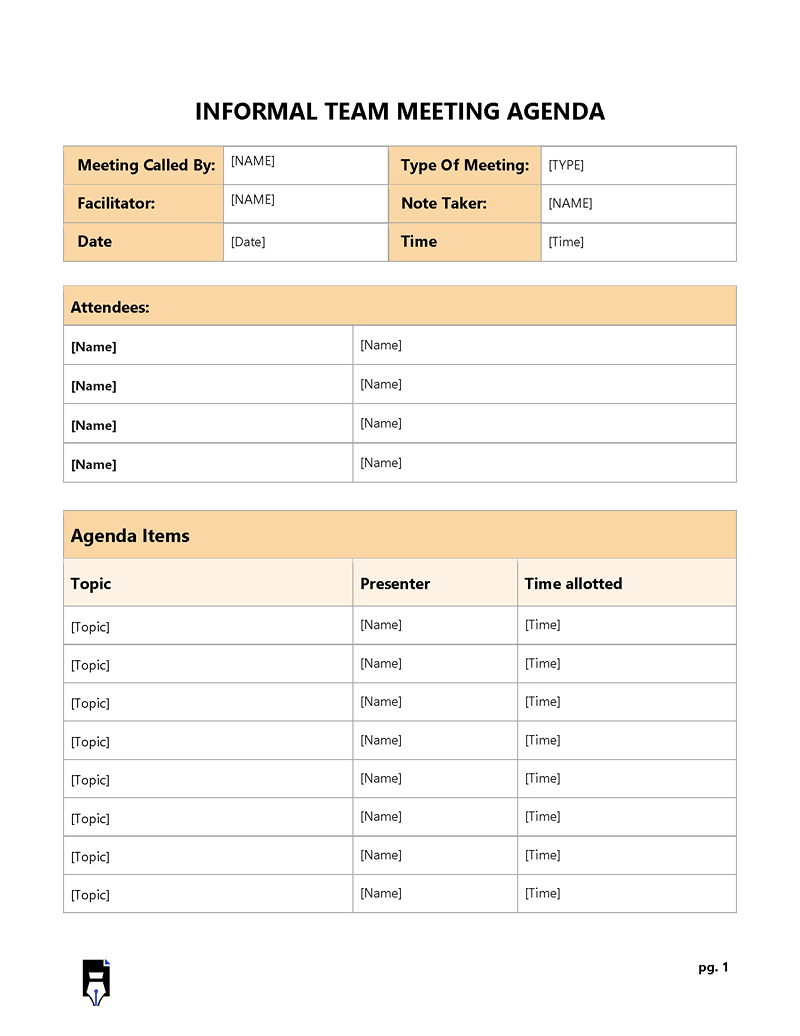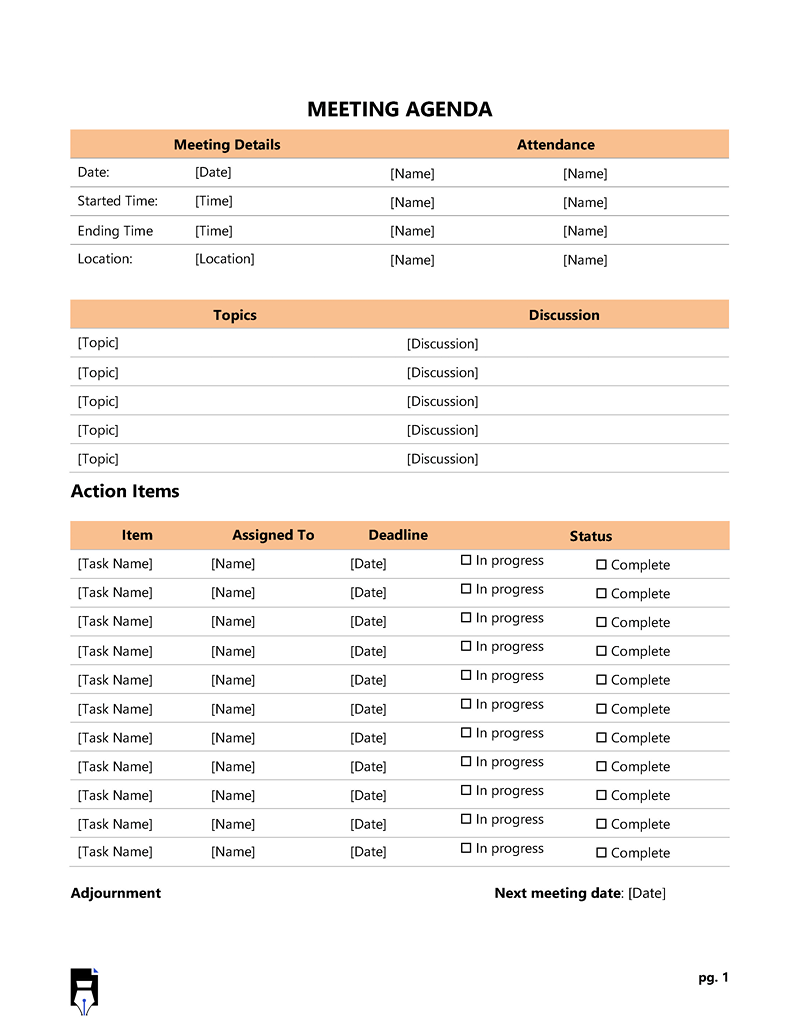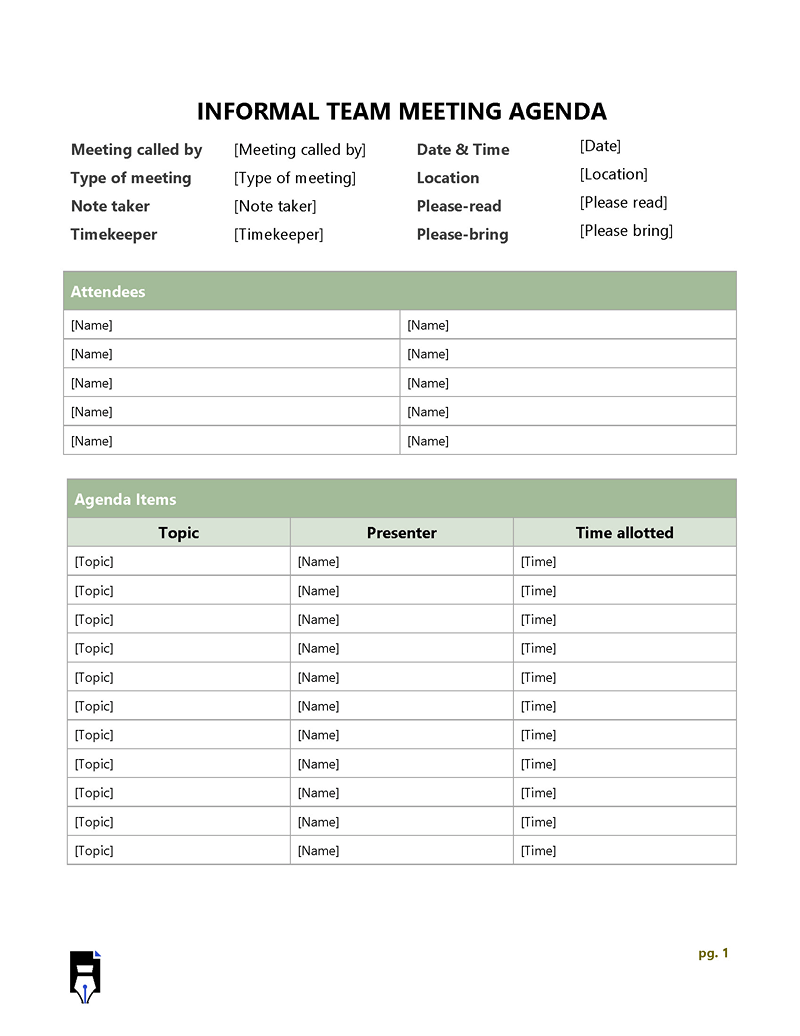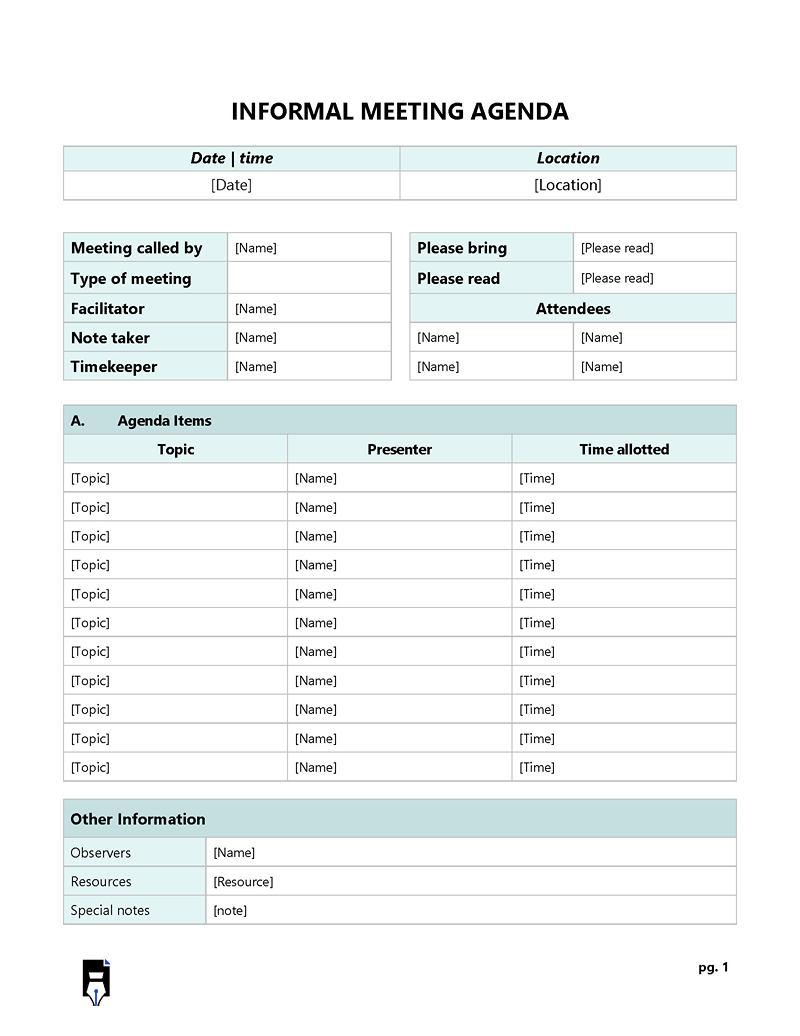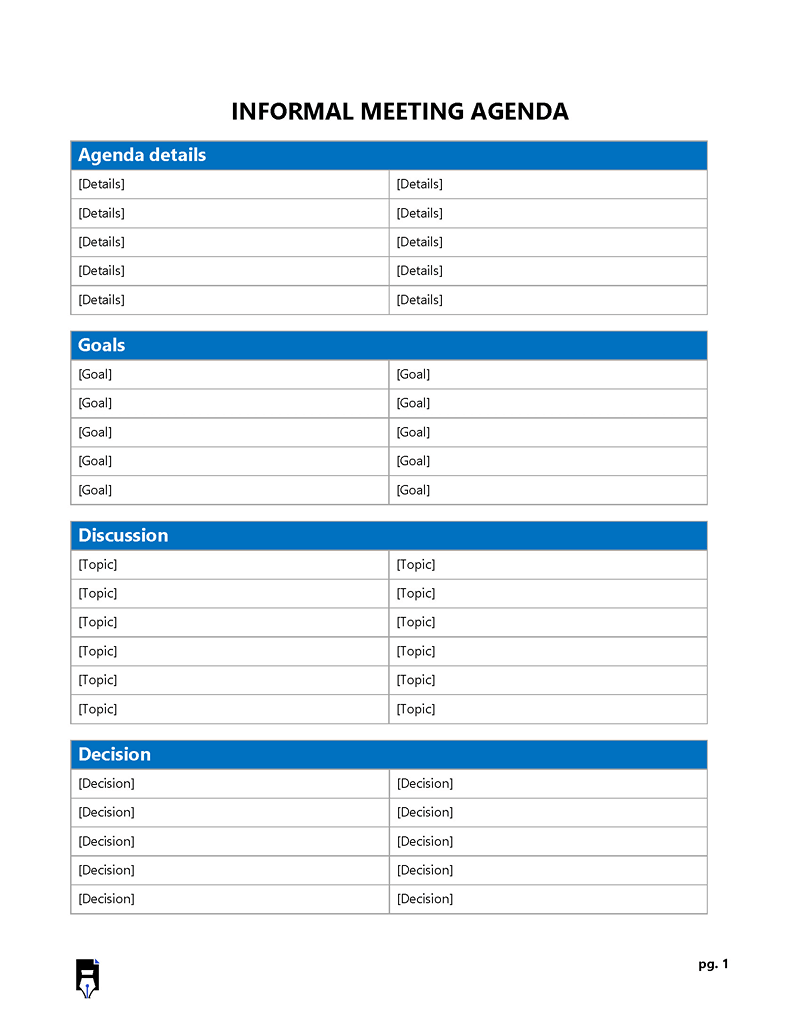In the corporate space, most meetings are held on a need-to basis. Essentially, employees and management meet whenever they need to resolve an issue. In most cases, they cannot organize formal meetings for all issues; they then organize informal meetings. These types of meetings have no specific order in terms of hierarchy. Typically, the person heading the meeting calls for the attendees, and they discuss whatever issue they have to solve. They are not held in formal spaces like boardrooms but in casual atmospheres like the staff kitchen or a staff member’s cubicle. The items discussed during these meetings are called agendas.
An agenda is a list of topics or activities to be addressed during a meeting. In most settings, the activities are listed in order of importance, and the meetings follow the order listed. An agenda helps the meeting chairperson track time and ensure that only the topics listed are discussed.
Formal and informal meetings differ in their organization, protocol, and settings. Most formal meetings are organized in advance. The agenda for these meetings is sent to attendees along with supporting documents. The attendees are recognized according to hierarchy, and an established protocol will be followed. On the other hand, informal meetings are day-to-day casual meetings organized by the staff. They include catch-ups and progress updates. Unlike formal meetings, they do not have strict protocol rules. This article focuses on how can Improve your meeting efficiency with a comprehensive Informal Meeting Agenda Template.
Informal Meeting Agenda Templates
Since informal meetings are sudden, it is advisable to have an informal meeting agenda template. The template will guide you in adding information and structuring your meetings. They are easy to use as you do not have to make them from scratch each time. Furthermore, they can be edited to suit the needs of each informal meeting. We provide free downloadable informal meeting agenda templates you can use at your convenience.
What is an Informal Meeting Agenda?
Informal meetings are the most common form of meetings held in any company. They serve various purposes, including brainstorming, project updates, and resolving emergencies like technical issues. First, the convener makes an informal meeting agenda of the meeting. Then, they will inform other attendees of the items to be discussed and assign time limits for discussions.
Since informal meetings are often unscheduled, the information disseminated in the meeting may not be adequately recorded and, as a result, may be omitted from future discussions. An informal meeting agenda ensures that such meetings are effectively recorded and that the information is available to other relevant company staff for reference.
Purpose
An informal meeting agenda helps record the information and items discussed at the conference. The information recorded for the first informal meeting can be used in preparing notes for the next meeting. It may also be shared with other departments, especially where the solutions are relevant to a common issue. Furthermore, the agenda can be used when creating structures to introduce more informal meetings to a company setting.
Another reason why informal meeting agenda is essential is because it promotes flexibility in company settings. It allows attendees to decide how, where, and when to meet. This flexibility promotes productivity as members can set their meeting hours around their assigned tasks; thus, they can achieve both personal and workplace objectives.
Informal meeting agendas reduce the pressure of formal meetings; it allows attendees to be at ease when discussing items on the agenda as there is no strict workplace protocol. Moreover, such informal settings allow the staff to bond and share ideas freely, promoting innovation and creativity.
Tip: Review minutes from the previous meeting. It is easier to organize meetings with information from previous ones. First, you should review the minutes of previous meetings to identify what was discussed, who attended, and whether there were items to be followed up on. You can then prepare your minutes comprehensively to cover previous topics and the items you want to discuss in the present meeting.
Types of Informal Meetings
While largely unstructured, informal meetings can be categorized into different types depending on the setting and information shared. The following are some types of informal meetings:
One-on-one meeting
This type of informal meeting occurs between a manager and their supervisee. They may discuss various topics, from personal issues to business ideas. The meeting may be recorded or be an off-the-record meeting to address issues the supervisee would like to discuss.
Team meeting
Team meetings are often held by teams involved in a project or pursuing one objective. They are set to update the team on progress or to resolve an arising issue. In addition, they can be used to share ideas, train, and create solutions to meet project deadlines.
Informational meeting
These meetings are used to discuss general company information. They are often called when a senior member of management needs to share information on policy changes or other changes to the day-to-day operations. They are not specific to departments; often, it’s a general meeting of staff members.
Components of an Informal Meeting Agenda
While the informal meeting agenda is not as strict as the formal one, it still needs to incorporate the vital information discussed in the meeting, like the attendees and the order of discussion.
The following are some essential components of an informal meeting agenda:
Housekeeping items
Housekeeping items include topics that need to be discussed before the main agenda. Including these items is unnecessary when the person chairing the meeting has their own notes. They include the names of absent employees and apologies for absences.
Housekeeping items also provide opportunities to share company news with the team because informal meetings gather targeted teams. They also include items from previous minutes that must be followed up on. While it is unnecessary to include them in the agenda, they should be recorded as a reminder for members and future reference.
Topics of new business
The topics of new business need to be addressed at the meeting. Each topic should be given a time allocation and a description of what subtopics must be discussed. The agenda should discuss the suggested voting method if a vote were taken on a new topic. The subtopics should be outlined in bullet points and be as specific as possible.
Specificity allows the convener of the meeting to ensure that the matters discussed remain within the scope of the agenda. It also allows the convener to set the deliverables for the meeting, which can be assessed to determine how successful the meeting was once it is concluded. The target of the meeting could be to take a vote or submit a report from the team committee.
Open session
The open session is for attendees to raise ideas, concerns, or issues not included in the agenda. Open sessions benefit companies by allowing employees to interact and share ideas and solutions comfortably. In return, management can respond effectively to the issues raised.
Summary
The summary is a brief review of what has been discussed. It reminds the attendees of the resolutions that have been made. The summary allows attendees to take notes of tasks that should be fulfilled before the next meeting and the decisions made in the present meeting. Toward the conclusion of the meeting, the convener may announce when the next meeting will be held or announce the deadlines for tasks assigned during the meeting.
Suggestions to Consider
Informal meetings are meant to help employees foster a culture of flexibility in the workplace while maintaining productivity. It is vital to ensure informal meetings are structured to help the company achieve its objectives.
The following tips can help achieve these objectives:
Establish KPIs around culture
KPIs are Key Performance Indicators. These are standards or measures used to gauge the success or progress of a project. For example, KPIs for company cultures help employees and management assess the success of informal meetings; anonymous NPS surveys can also be used to assess employee satisfaction. Through KPIs, employees understand that their observation, attendance, and contributions to meetings matter. They also help establish and ingrain employee performance in meetings as a culture.
Create open forums for communication
Informal meetings are often held in casual environments like restaurants and staff cubicles. These environments generally put employees at ease, in addition to the fact that the meetings do not have strict protocols. During the meetings, management can encourage open communication by allowing employees to share bits of their personal lives. You can also allow employees to choose who will chair the next meeting on a rotation basis.
Give structure
Even if informal meetings are not fully structured, they should have a loosely established outline. This outline can be in the general conduct, a flexible but determined time frame, and even a rotational leadership structure. It ensures that the objectives set for a meeting are achieved without arranging a formal meeting. On the other hand, informal meetings should not be too structured as they are meant to help employees relate on a more personal level.
Invest in relationships
Workplace cohesion is an integral part of productivity. Informal meetings can establish and strengthen colleagues’ relationships by sharing personal experiences. In addition, managers can observe employee personalities and use them to create productive teams.
Note: Companies can employ technology to cater to their informal meeting needs. For example, they can utilize applications like Microsoft Teams, allowing their employees to meet on-site at the company’s offices or from home.
Frequently Asked Questions
What’s involved with informal meetings?
Informal meetings are recommended for minor decisions and communication. There is no formal structure or hierarchy in these meetings, and each attendee may get a chance to speak or share an idea. Furthermore, they may be used when engaging in collaborative discussions. However, major decisions like a change of policies cannot be discussed in informal meetings.
Where do informal meetings fit into the management function?
The management can use informal meetings to share important information and conduct satisfaction surveys. They reduce the protocols and procedures required for communication with upper levels of the company’s leadership. These meetings can be used to promote efficiency and good communication.
How do informal meetings impact organizational goals?
Attendees of informal meetings can share ideas to help the company achieve its goals. These meetings affect individual performance, which may affect organizational performance. If appropriately utilized, informal meetings can increase productivity by promoting healthier individual and organizational work relationships.
What terms are used when conducting informal meetings?
Informal meetings may go by different titles, often determined by the agenda of the meeting. Impromptu meetings are those called without notice; ad hoc meetings are called to discuss one agenda (ad hoc means ‘for this), and procedures are rules set for informal meetings.
